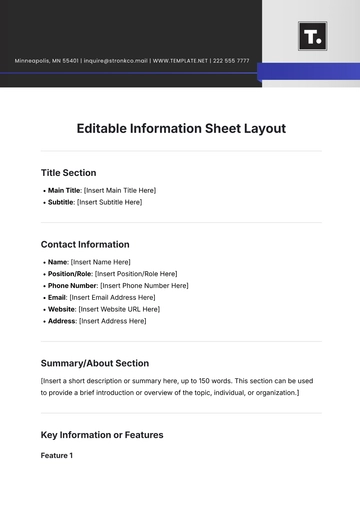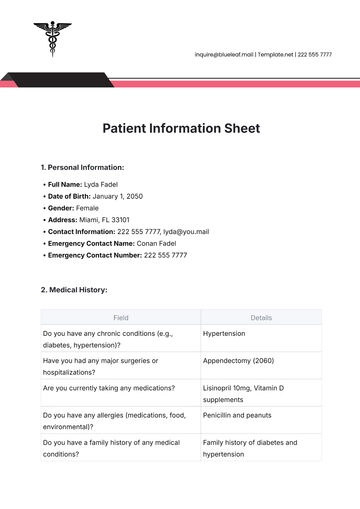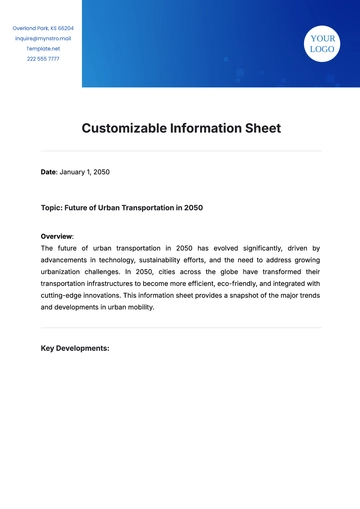Free Autism Fact Sheet

I. INTRODUCTION
The Autism Awareness Initiative is dedicated to spreading knowledge and understanding about autism spectrum disorders (ASD). This fact sheet aims to provide valuable information about ASD to help individuals better understand its symptoms, prevalence, and available support resources.

II. OVERVIEW
Autism spectrum disorders are a diverse range of neurodevelopmental conditions that affect how a person perceives and interacts with the world. Individuals with ASD may experience challenges in social communication, sensory processing, and behavior regulation. It's important to recognize that ASD is a spectrum, meaning each person's experience is unique.

III. KEY POINTS
|
|
|
|
IV. STATISTICS AND FIGURES
A. Prevalence
According to the latest data from the Centers for Disease Control and Prevention (CDC), the prevalence of autism spectrum disorders (ASD) is significant, affecting approximately 1 in 54 children in the United States.
B. Gender Disparities
ASD is diagnosed more frequently in boys than in girls, with a ratio of about 4:1. This gender difference in diagnosis has been observed consistently across various studies and populations.
C. Global Impact
Region | Prevalence Rate |
|---|---|
North America | 1 in 54 children |
Europe | Varies, but generally rising |
Asia | Varies, with increasing rates |
Africa | Limited data, but awareness growing |
ASD prevalence rates vary worldwide, with increasing awareness and diagnostic criteria expansions contributing to higher reported rates in many countries. The prevalence rates mentioned here are approximate and subject to change as more research becomes available.
This table provides a snapshot of ASD prevalence across different regions, highlighting the global impact of the disorder and the importance of raising awareness and understanding on a global scale.
V. COMMON MYTHS
Myth: Autism is caused by poor parenting or vaccines. Fact: Extensive research has debunked these myths. ASD is a complex condition with genetic and environmental factors contributing to its development. |
Myth: Autism can be cured. Fact: While early interventions can improve quality of life, there is no cure for ASD. Acceptance and support are vital for promoting well-being. |
Myth: Individuals with ASD lack empathy. Fact: People with ASD may have difficulty expressing empathy in conventional ways, but they are capable of understanding and experiencing emotions. |
VI. FREQUENTLY ASKED QUESTIONS
A. What are the early signs of autism?
Early signs may include delayed speech or language development, difficulty with social interaction, repetitive behaviors, and intense interest in specific topics.
B. How is autism diagnosed?
Autism is typically diagnosed through a comprehensive evaluation process, which may involve observation, interviews with caregivers, developmental assessments, and screening tools.
C. What treatments are available for autism?
Treatment approaches vary based on individual needs and may include applied behavior analysis (ABA), speech therapy, occupational therapy, social skills training, and medication for co-occurring conditions such as anxiety or ADHD.
VII. CONCLUSION
Raising awareness and understanding of autism spectrum disorders is crucial for fostering inclusive communities where individuals with ASD are accepted and supported. By dispelling myths, advocating for early intervention, and promoting acceptance, we can create a more inclusive society where everyone has the opportunity to thrive.

- 100% Customizable, free editor
- Access 1 Million+ Templates, photo’s & graphics
- Download or share as a template
- Click and replace photos, graphics, text, backgrounds
- Resize, crop, AI write & more
- Access advanced editor
Enhance and Discover the Autism Fact Sheet Template from Template.net. Empower your advocacy with this fully editable and customizable resource. Crafted with precision, it's tailored to your needs, and editable in our Ai Editor Tool. Present crucial facts effortlessly. Elevate awareness, one fact sheet at a time. Get yours today.
You may also like
- Attendance Sheet
- Work Sheet
- Sheet Cost
- Expense Sheet
- Tracker Sheet
- Student Sheet
- Tracking Sheet
- Blank Sheet
- Information Sheet
- Sales Sheet
- Record Sheet
- Price Sheet
- Plan Sheet
- Score Sheet
- Estimate Sheet
- Evaluation Sheet
- Checklist Sheet
- Bid Sheet
- Call Log Sheet
- Bill Sheet
- Assessment Sheet
- Task Sheet
- School Sheet
- Work From Home Sheet
- Summary Sheet
- Construction Sheet
- Cover Sheet
- Debt Spreadsheet
- Debt Sheet
- Client Information Sheet
- University Sheet
- Freelancer Sheet
- Bookkeeping Sheet
- Itinerary Spreadsheet
- Scorecard Sheet
- Run Sheet
- Monthly Timesheet
- Event Sheet
- Advertising Agency Sheet
- Missing Numbers Worksheet
- Training Sheet
- Production Sheet
- Mortgage Sheet
- Answer Sheet
- Excel Sheet





























